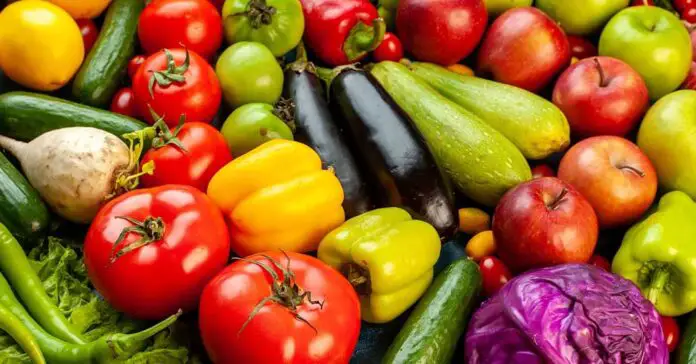Are you looking for a way to eat healthier? Eating raw vegetables is one of the great ways to get all the vitamins and minerals your body needs. It can be hard to know which vegetables are best when it comes to eating them raw, so we’ve put together a list of 10 of the best vegetables that you can eat raw and enjoy many benefits that come with that.
Whether you’re looking for something crunchy or something more on the sweet side, this list has something for everyone. Read on to find out what makes these veggies some of the tastiest and healthiest options around!
Eating raw veggies doesn’t have to be boring. With this list, you can learn about different kinds of vegetables and discover how they taste in their natural form. From leafy greens like spinach and kale to carrots and sweet bell peppers, there are plenty of delicious options here. Plus, adding raw vegetables into your diet can help increase your intake of essential vitamins, minerals, and fiber while also keeping your calorie count low.
Check out also: Chunky Guacamole With Sour Cream Recipe – Quick & Easy
- Eating Raw Vegetables – Why Should You Care?
- Nutritional Benefits Of Raw Vegetables
- Eating Raw Veggies – Where To Start
- Sweet Vegetables? – There Are A Few!
- Storage And Preparation Tips
- What Is The Best Way To Get The Most Nutrition From Raw Vegetables?
- Are There Any Risks Associated With Eating Raw Vegetables?
- Are There Any Ways To Make Raw Vegetables Taste Better?
- Eating Raw Veggies – There You Go!
Eating raw Vegetables – Why Should You Care?
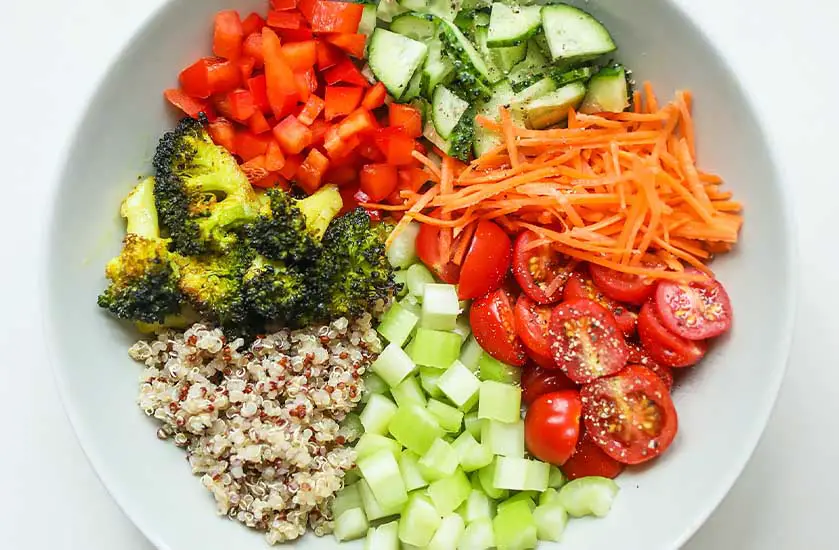
Raw vegetables are those that have not been cooked or processed in any way. They are simply washed, cut, and eaten as is. Eating raw vegetables can be a great way to get your daily dose of vitamins and minerals, as the cooking process in some cases can destroys nutrients – for example boiling process easily gets rid of most water-soluble vitamins from your veggies.
Must read: Is Raw Food Healthier Than Cooked Food? – healthline.com
Including raw veggies in your diet can be fun and easy! Try adding them to salads or sandwiches, chopping them into small pieces for dips or salsas, or just eating them plain as a snack. With so many varieties of raw vegetables available these days, it’s really easy to find something you enjoy.
Raw vegetables are an excellent source of nutrition and can easily be incorporated into any diet for maximum health benefits. And they’re delicious! So why not give them a try today? You may be surprised at how much you enjoy them!
Nutritional Benefits Of Raw Vegetables
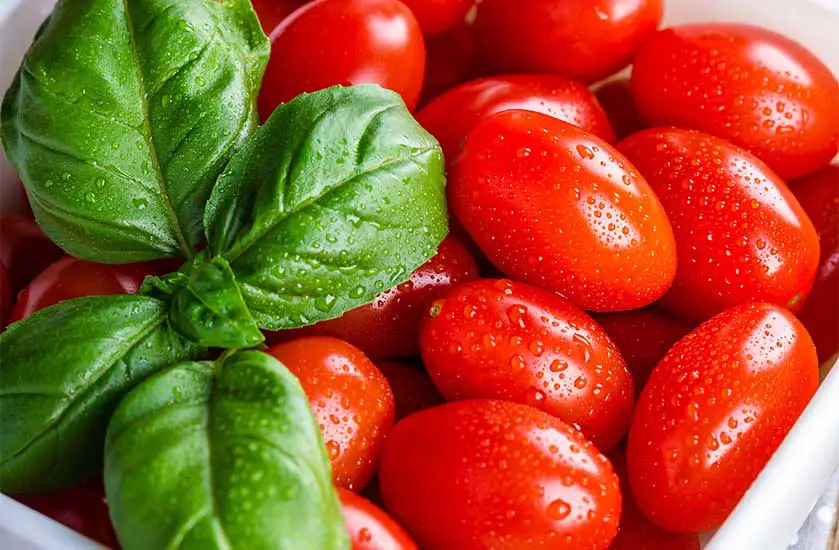
Raw vegetables are packed with essential vitamins and minerals that our bodies need to function properly. Eating them regularly can help boost your immune system, improve digestion, reduce cholesterol levels, and even aid in weight loss. Plus, they contain plant-based proteins and dietary fibers which can help keep you feeling fuller for longer. With so many benefits, it’s easy to see why eating raw veggies is a great choice for anyone looking to improve their overall health!
When it comes to nutrition, raw veggies are often superior to cooked. Since cooking can destroy some of the nutrients found in vegetables, consuming them raw ensures that you’re getting the most out of your food. Additionally, research suggests that there are certain compounds found in raw vegetables that may be beneficial for fighting cancer cells and protecting against other diseases.
Eating raw veggies doesn’t have to be boring or tasteless either. There are plenty of ways to make them delicious! Try using some simple spices and herbs to give them an extra kick of flavor. You can also add raw veggies into salads or your daily sandwiches for an easy way to get a nutritious meal on the table quickly.
Eating Raw Veggies – Where To Start

With so many options available, it can be hard to know which raw vegetables are the best. Fortunately, there are some classic choices that you can always count on for their flavor and nutritional value. Here’s a look at some of the most popular types of vegetables that you can enjoy without cooking them. A neat starting point!
Leafy greens like kale and spinach are a great place to begin. They’re high in fiber, packed with vitamins A, C, and K, and contain valuable minerals like iron and calcium. Eating them raw is also an easy way to get more essential phytonutrients into your diet. Plus, these veggies don’t take long to prepare – all you have to do is give them a rinse before eating. Don’t wait and surprise your friends with munching on some green goodness!
Cucumbers and bell peppers are two other vegetables that work well in salads or as solo snacks. They contain healthy amounts of vitamin A and C, as well as dietary fiber and much useful antioxidants. Both of these veggies also have a refreshing crunch when eaten raw – perfect for when you’re looking for something light and amazingly satisfying! You can also consider cutting them into smaller pieces and put them inside your lunchbox. This is most of the time the best way to go!
Sweet vegetables? – There Are A Few!
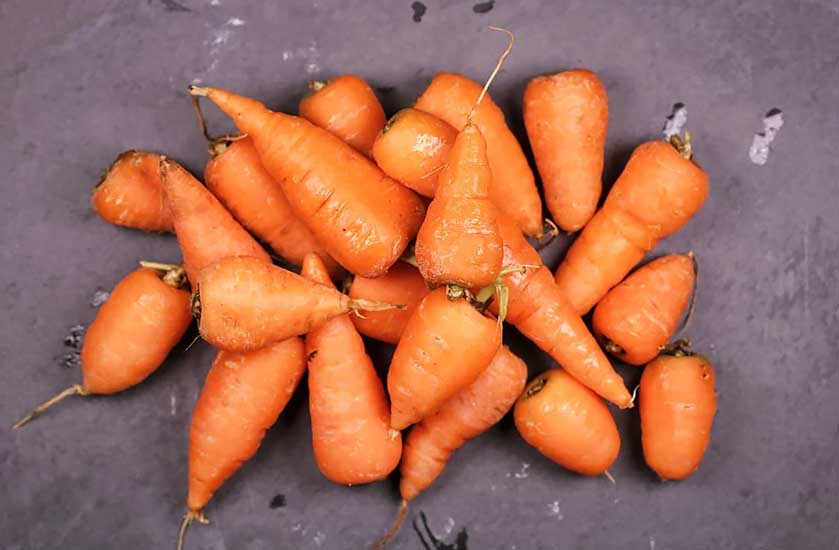
For those who prefer sweeter options, certain varieties of carrots make a great choice too. Raw carrots provide plenty of beta-carotene which helps promote healthy skin and vision, plus they have several other vitamins such as B6 and K1. While they won’t provide you the same level of “sweetness” as sugary drinks or sweets, after eating them for a while you will start to appreciate their unique taste qualities.
If you want something even more in the sweet department, try snacking on ripe raspberry tomatoes – these, when coming from a reliable source can taste great even without any added spices!
Other kinds of vegetables with a slightly sweeter aftertaste are for instance corn, peas and beets.
Storage And Preparation Tips
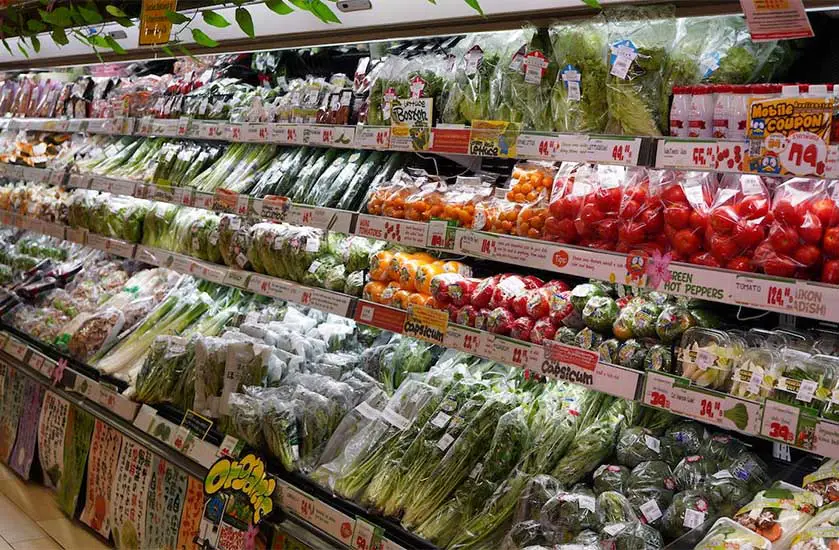
Now that you have an idea of what raw vegetables to keep on hand, it’s important to know how to store and prepare them. Proper storage and preparation can help ensure that your veggies stay fresh and retain their nutrients. Here are some tips for getting the most out of your raw vegetables.
When storing vegetables in the refrigerator, make sure they are kept in a sealed container or plastic bag. This will help prevent moisture from escaping and will also keep at least some of the air-borne bacteria from contaminating them. Additionally, try to use up any vegetables within two days of purchase so that you’re always eating them at their peak freshness.
When it comes to preparation, don’t be afraid to get creative! Try slicing up cucumbers or carrots for a delicious salad topping, or mix together different types of leafy greens for a unique twist on almost any side dish. Coming up with new salad ideas based on your newly bought vegetable haul is a great idea too. There are also a lot of great and affordable salad sauces that you can use to amp your vegetable mixes up.
No matter what type of vegetable you choose, always remember to give it a good wash before consuming – this is important even if you’re eating them straight out of the package! Even if a vegetable comes from sealed packaging be sure to wash it thoroughly. You don’t know what chemicals it came in contact with before it eventually landed in the sealed pack!
Now, let’s not wait any longer and get straight to the list!
1. Arugula
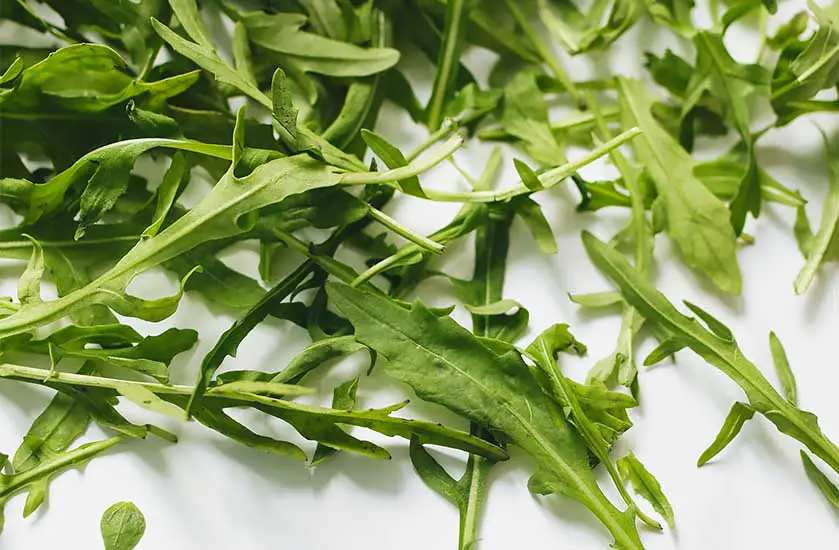
With its intense flavor and crisp texture, arugula is one of the best vegetables to eat raw. Whether you’re tossing it into a salad or using it as a garnish for soups and stews, this tasty green can add a delicious dimension to almost any dish. It’s also one of the most popular pizza toppings! Here’s what you need to know about adding raw arugula to your diet.
Arugula is a member of the Brassicaceae family, which includes broccoli and kale. The leaves are dark green and have a slightly jagged edge – in fresh arugula they should be bright in color with no wilting or yellowing.
When purchasing fresh arugula, look for bunches that are free of brown spots and have bright green leaves. You can store them in the refrigerator in an airtight container for between three to seven days – just as always, make sure to give them a good rinse before eating! For optimal flavor, you can try eating raw arugula with some sliced almonds. Remember that it’s also an optimal vegetable for all your fancy salads!
Eating arugula raw is an easy way to get all its nutrients without losing any of its flavor. Whether you use it as part of a salad or on its own as a snack, there are plenty of ways to enjoy this nutritious vegetable. With its bold taste and soft texture, arugula is always a great option when it comes to raw veggies.
2. Broccoli
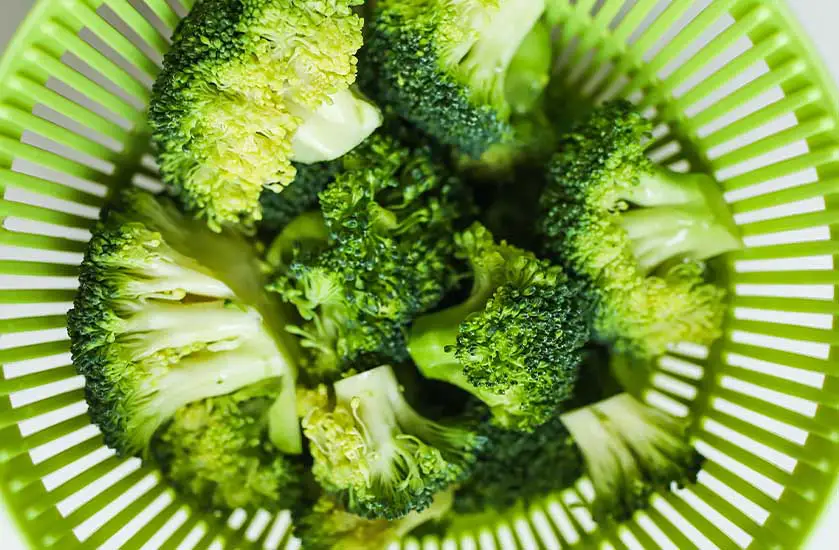
Moving on from arugula, another great vegetable to eat raw is broccoli. Yes, you can actually eat it raw after washing it! This versatile vegetable has quite an interesting flavor and really crunchy texture that can add a great new experience to your daily snacking habits. Here’s what you need to know about broccoli.
Broccoli belongs to the very same family as cauliflower and Brussels sprouts, and it’s packed with nutrients like potassium and Vitamin C. When purchasing fresh broccoli, look for bunches that are bright green in color – they should also be free of any brown spots, they indicate that the vegetable is slowly starting to spoil. You can store them in the refrigerator in an airtight container for up to five days.
Raw broccoli is incredibly versatile – it makes a great snack when eaten alone or added to salads. Broccoli can also be lightly steamed so that it becomes a bit softer while still maintaining its best nutritional value. If you’re looking for something more flavorful, try tossing it with some garlic and olive oil before roasting in the oven for a delicious side dish.
Overall, eating raw broccoli is a great way to enjoy all its health benefits without losing any of its flavor or crisp texture. Whether you choose to snack on it plain or incorporate it into your favorite recipes, this nutritious vegetable is sure to become an essential part of your diet!
3. Carrots
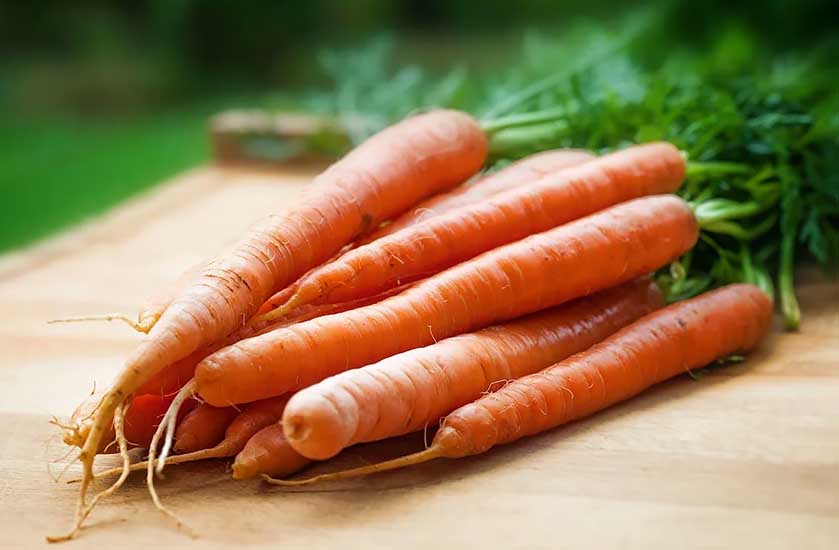
Carrots are another delicious vegetable that can be eaten raw. This root vegetable is an excellent source of Vitamin A and beta-carotene, as well as being rich in fiber and other essential nutrients. Did you know that carrots actually also come in a variety of colors, ranging from traditional orange to yellow, purple, and white?
When selecting fresh carrots, look for those that are firm and have a bright color with a smooth surface and without black spots near their tops. You can store them at room temperature for up to five days or refrigerate them for longer storage. Additionally, as with all vegetables, you should wash the carrots thoroughly before eating.
Raw carrots are incredibly versatile and can be enjoyed in a variety of ways. You can eat them plain as a snack or cut them into discs, cubes, or thin strips for dipping in hummus or even ranch dressing (!). They also make a great addition to salads when finely grated or sliced.
No matter how you choose to enjoy carrots, they are an easy way to add nutrition and flavor to your daily meals. Also, their sweeter taste pairs perfectly with savory ingredients like nuts, seeds, cheese, and grains – making them the perfect addition to many dishes!
See also: Can You Put Pulp Back Through a Juicer? – Yes, and you should!
4. Cauliflower
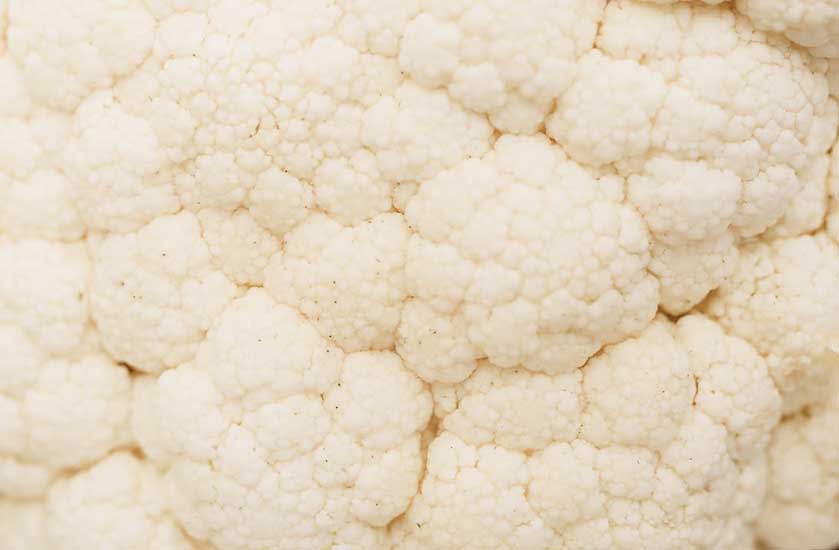
Continuing with the trend of vegetables that can be enjoyed raw, cauliflower is another excellent option. This cruciferous vegetable is full of essential vitamins and minerals, as well as being a good source of fiber. Cauliflower has a rather “soft” flavor and a firm texture, making it an ideal ingredient for salads, slaws, and more. In terms of texture and flavor it’s really similar to broccoli!
When selecting fresh cauliflower, look for heads that are compact with crisp green leaves still attached. The head should have no blemishes or discoloration on any of its parts. You can store it in the refrigerator for up to five days. Be sure to wash it before eating in order to remove any dirt or residing bacteria.
There are many delicious ways to enjoy cauliflower raw. It can be eaten simply on its own or chopped into smaller florets for dipping into hummus or salsa. It also adds great texture to salads.
Cauliflower is an incredibly versatile vegetable that can easily be incorporated into your meals for extra added nutrition. Its rather soft taste pairs perfectly with bold flavors like garlic, cumin, lemon juice, and tahini – so why not give it a try today?
5. Celery
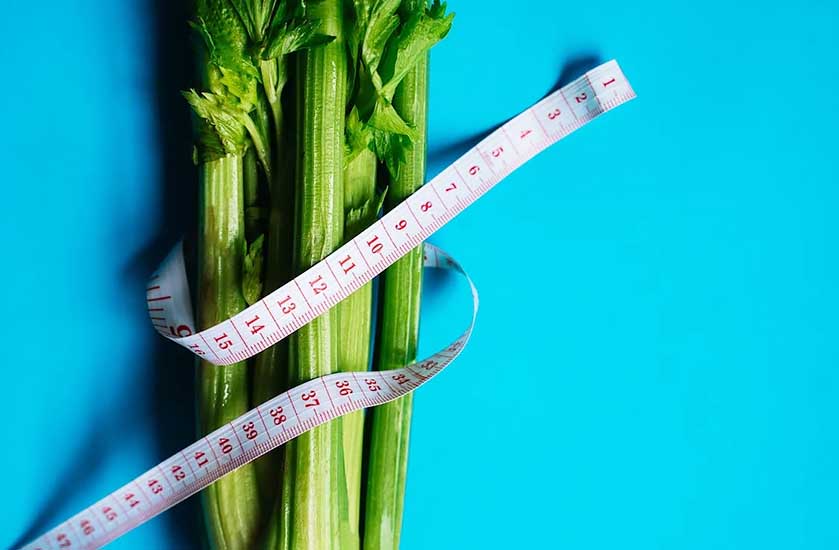
Moving on, celery is another great vegetable that can be enjoyed raw. This crunchy green vegetable is a true powerhouse of nutrition, packed with vitamins A and K, as well as much needed potassium and folate. Celery is also very low in calories and has a high water content, making it an ideal quick snack.
When choosing celery at the grocery store or farmer’s market, look for firm stalks with bright green leaves. You can store the celery in your refrigerator’s crisper drawer even for up to a few weeks.
Celery makes a fantastic addition to salads and slaws, but it can also be eaten on its own as a healthy snack. You can also add diced celery to sandwiches or wraps. Finally, consider using finely chopped celery as a topping for tacos or pizza – the possibilities are almost endless!
From adding texture to salads to enjoying it on its own as a snack, there are many delicious ways to incorporate celery into your diet. With its mild flavor and unique texture, this versatile veggie is sure to become your favorite in no time!
6. Spinach
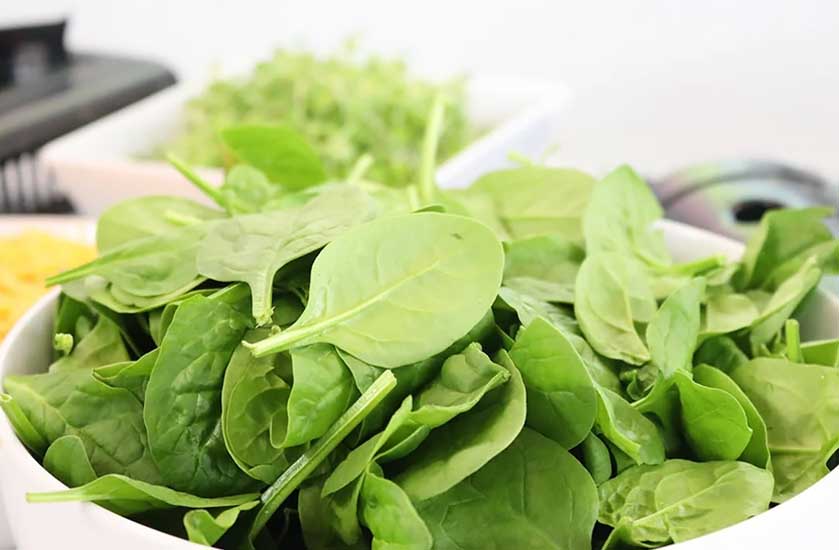
Continuing on, spinach is another wonderful vegetable that can be easily consumed raw. This leafy green is rich in iron, fiber, and vitamins A, C, and K. Eating spinach raw allows you to reap the maximum nutritional benefits it has to offer and due to its soft leaves it goes down really well even in its natural form!
When selecting spinach at the store or market, look for firm leaves that are bright green in color with no signs of wilting or discoloration. Store your spinach in an airtight container in the refrigerator for up to a week after removing potential bad leaves from the package – and once again, wash it before eating.
Raw spinach can be used in salads and sandwiches. It also pairs nicely with fruits like apples and oranges in smoothies and juices. And don’t forget about adding some fresh baby spinach leaves to tacos, pizza, wraps, or omelets for a nutritious boost. Same as arugula, raw spinach also makes a great pizza topping. Moreover, you can use chopped raw spinach as a topping for grilled fish or various kinds of meat dishes!
There’s almost no limit to what you can do with this nutrient-dense vegetable. With its distinct flavor and hearty texture, it’s one of the best vegetables to eat raw on this list.
7. Bell Peppers
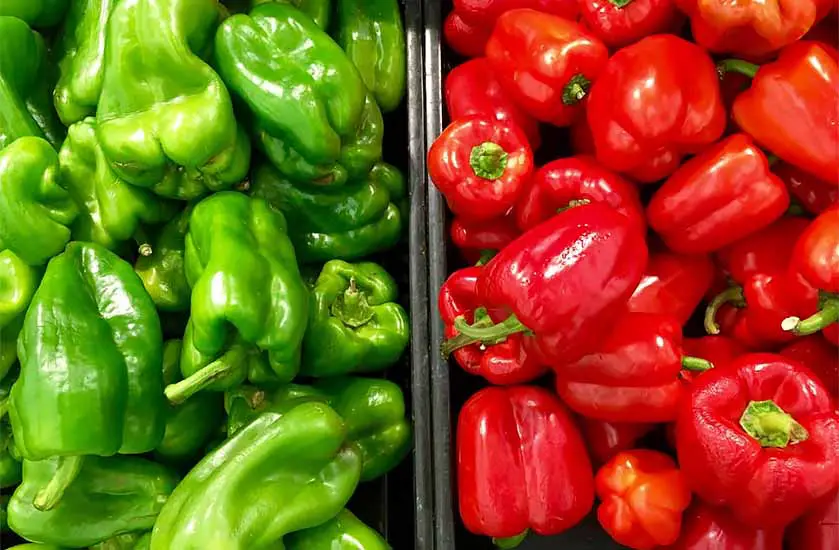
Looking for a tasty way to get even more extra vitamins and nutrients into your diet? Bell peppers are an excellent choice. While most of the vegetables we mentioned have rather mild flavors compared to other kinds of food, ripe bell peppers can be very different. With their naturally sweet and juicy flavor, they make a great addition to salads, sandwiches, and more.
Bell peppers come in a variety of colors – green, yellow, orange, and red – so you can pick whatever you like best or mix them up for some extra color in your meals. They’re also full of vitamins C and A as well as carotenoids that help boost the immune system. Eating bell peppers raw is a great way to get these essential nutrients into your diet.
You might also like: Air Fried Roasted Bell Peppers Recipe – Quick & Easy (Video!)
When buying bell peppers at the store or market, look for ones that have a smooth glossy skin with no signs of bruising, dark wrinkled spots or discoloration. You can refrigerate them in an airtight container, usually for somewhere up to two weeks.
Incorporating bell peppers into your daily meals is easy – just chop them up and add them to salads or sandwiches or simply cut them up into neat strips and put them in your lunchbox. You can also use them as toppings on tacos or pizza, stuff them, or even blend them into smoothies! Whatever you choose to do with bell peppers, they will add nutrition and that extra touch of flavor to any dish you make.
8. Radishes
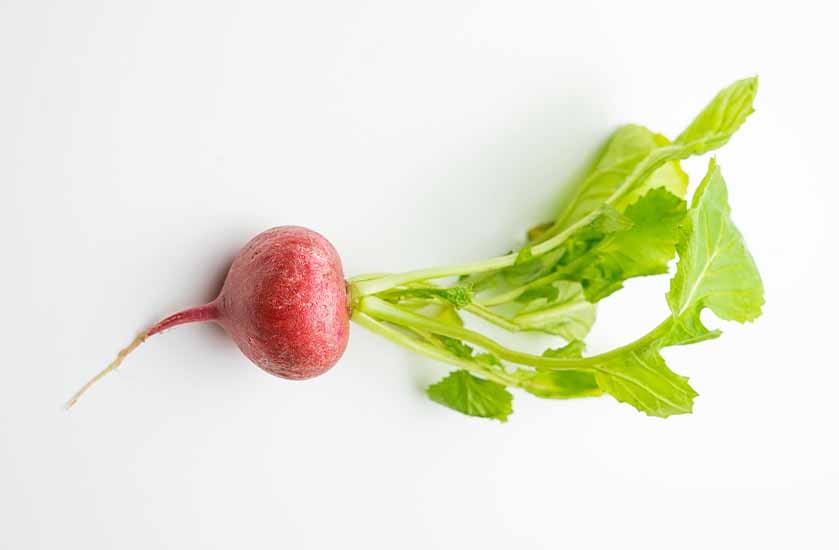
Radishes can be eaten both raw and cooked. When eaten raw, they provide a crunchy texture and a sharp and almost spicy flavor that adds a neat twist to any meal. Plus, they contain vitamins C and K, as well as minerals like calcium, magnesium, and potassium. Eating radishes raw is an easy way to get these essential nutrients into your system, and for me the best way to eat them is to simply put them inside my sandwiches with cream cheese. Tasty!
When purchasing radishes at the store or farmers’ market, choose ones that are firm with a bright color – these are the best indicators of freshness. You can store them in the refrigerator in an airtight container for up to 1-2 weeks.
Remember to wash your radishes before eating, this can be especially important with ground vegetables. You can slice them up and put them into salads or sandwiches, or simply eat them in their natural form – although it might be a little bit harder.
No matter how you decide to incorporate radishes into your diet, you’ll be sure to get all of their nutritional benefits – and some delicious spicy-like flavor!
9. Tomatoes
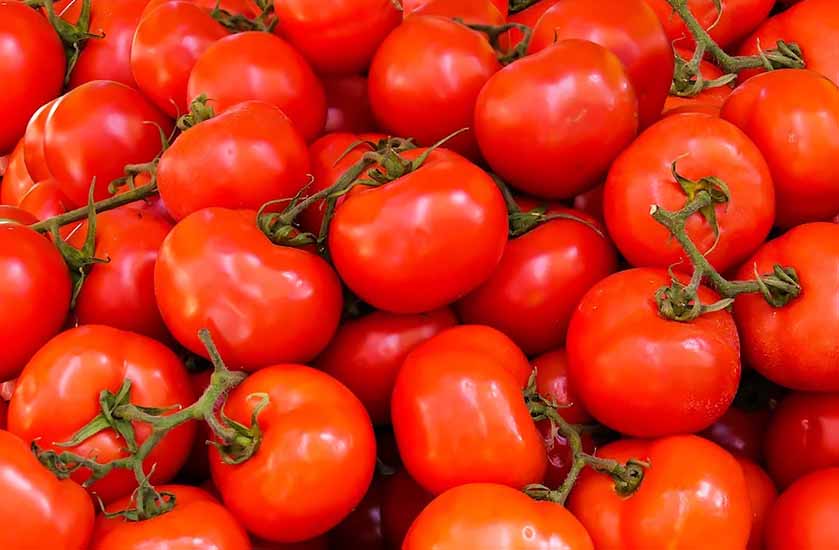
Tomatoes are one of the most versatile vegetables, and as you most probably already know they can and should be enjoyed raw as well. Not only do they taste great, but they are also packed with health benefits like vitamins A and C, lycopene, and potassium. Eating tomatoes raw is an easy way to get to these valuable nutrients without any added calories or fat.
When shopping for tomatoes, look for ones that have smooth skin and without any soft spots or wrinkles. These are most often the first signs of tomato spoilage. Store them in a cool location away from direct sunlight until you’re ready to use them. When it’s time to eat them, simply wash them in water before slicing them up.
If you’re looking for something a little more exciting than just eating plain tomatoes on their own, try adding them to salsa or guacamole recipes. No matter how you enjoy your tomatoes – raw or cooked – you’ll be sure to get all of their nutritional benefits plus some delicious flavor!
10. Cucumbers
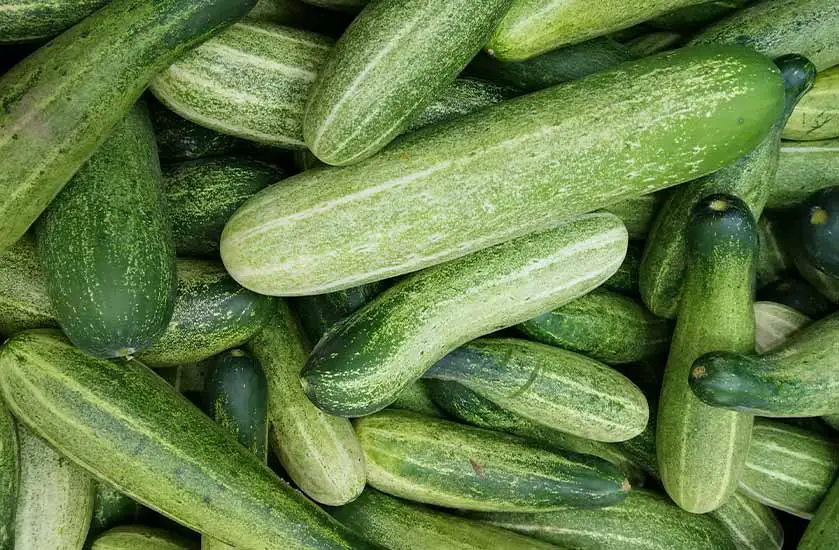
Building on the versatility of tomatoes, fresh cucumbers are another vegetable that makes a delicious snack when eaten raw. They’re packed with essential vitamins and minerals like vitamin K and potassium, making them a great addition to any healthy diet.
Store the cucumbers in the refrigerator until you’re ready to use them – this will help keep them fresh for up to a week. To prepare them for eating raw, simply give them a rinse before slicing them into thin slices, cubes or strips.
Check out also: Air Fried Fresh Cucumbers – No Breading! – A Quick Snack (Video!)
Cucumbers can be enjoyed all on their own as a refreshing snack or added to other dishes for some extra crunch. Try slicing them up and adding them to your favorite salad recipe for an extra boost of flavor and nutrition. Or if you’re feeling creative, try making cucumber boats – hollowed-out cucumber halves filled with tuna salad or hummus – for a fun lunchtime treat!
Frequently Asked Questions
What Is The Best Way To Get The Most Nutrition From Raw Vegetables?
One way to ensure that you’re getting good nutrition from raw vegetables is to use them in an already balanced diet. Eating a mix of fruits, vegetables and natural proteins and grains can help you get enough nutrients without having to rely on many processed foods or supplements. Always be sure that you have established good eating habits as a baseline before you decide to boost your diet with additional nutrients.
When it comes to getting the most nutrition from raw vegetables, there is no one-size-fits-all answer. Eating a variety of fresh veggies that are in season and locally grown can provide the most bang for your buck. Different vegetables offer different amounts of vitamins and minerals, so consuming a variety of them will help you get the most out of your meals.
Raw vegetables are also great for snacking on throughout the day. Carrots, celery stalks, cut bell peppers and cucumbers are some examples of tasty snacks that provide important nutrients like vitamin C and fiber. Eating fresh veggies as snacks is an easy way to boost your immune system while avoiding unhealthy heavily processed snacks with empty calories.
Are There Any Risks Associated With Eating Raw Vegetables?
Eating raw vegetables can be a nutritious and healthy choice, but it is important to consider the potential risks associated with consuming them. Raw vegetables are often more nutrient-dense than cooked ones, as cooking can cause some nutrients to be lost in the process. However, there are some hazards that must be taken into account when consuming raw vegetables.
One of the most common health risks associated with eating raw vegetables is contamination with foodborne illnesses. Many bacteria and parasites naturally live on the surfaces of fruits and vegetables, and some of them can lead to food poisoning if ingested. Vegetables may also contain pesticide residues from when they were grown or harvested, which could be harmful when consumed in certain amounts. That’s why it’s always vital to wash all produce before eating it to reduce these kind of risks.
Are There Any Ways To Make Raw Vegetables Taste Better?
Eating raw vegetables is a great way to get more nutrition into your diet, but sometimes it can seem rather difficult to make them actually taste good. The question then becomes: are there any ways to make raw vegetables taste better? The answer is yes! With the right ingredients and techniques, you can enjoy delicious and nutritious raw vegetables without sacrificing flavor.
One of the easiest ways to improve the flavor of raw vegetables is to use dressings or sauces, both when using your vegetables in salads and when eating them solo. You can go for something as simple as a vinaigrette or even experiment with different types of marinades or herb combinations. Did you know that even Tartar sauce can work well with some raw veggies?
Not only do these add flavor, but they also often help to bring out the natural flavors of the vegetables themselves. Also, adding some freshly squeezed lemon juice can give your veggies an extra zing of sourness.
Another way to enhance the taste of raw vegetables is by incorporating complementary flavors in your meal. Many types of fruit can certainly help you with that! Adding fruits such as apples, oranges, or grapefruits into a salad can help add sweetness and depth that will help balance out the bitterness or mild taste of certain greens. Additionally, adding nuts like walnuts or almonds can provide some creative tones that are sure to liven up any dish.
Raw vegetables don’t have to be boring if you take some time to explore their various different flavors and textures. With just a few simple ingredients, you can easily turn any supposedly bland dish into something delicious! Whether you opt for a dressing or try adding in some additional toppings, there are plenty of ways to make raw veggies taste great without too much effort.
Eating raw veggies – there you go!
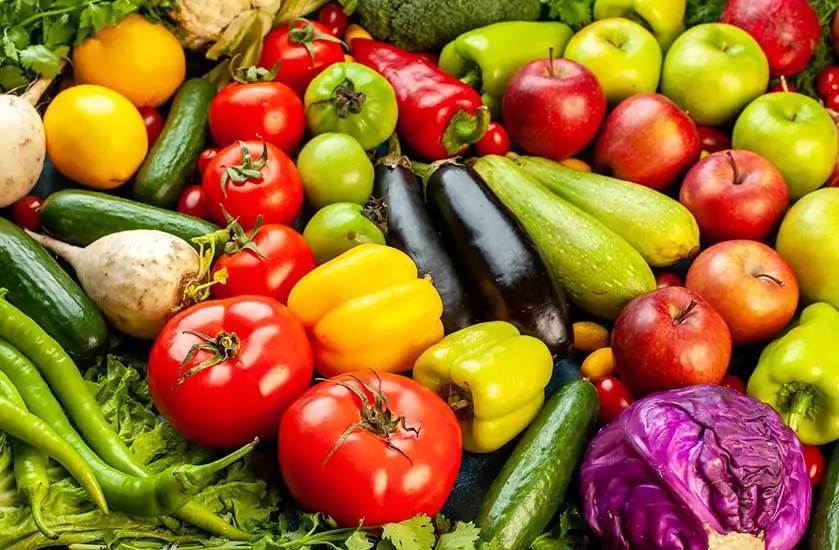
Eating raw vegetables is one of the best ways to get the most nutrition out of your food. It’s also a great way to add variety to your diet and make meals more exciting. There is also a plenty of recipes out there featuring raw vegetables that can help you enjoy their flavor and nutrition without the new combinations being bland tasting or boring. Finally, there are plenty of ways to make raw vegetables taste even better such as adding sauces, dressings or spices to the mix or pairing them with other ingredients in salads and wraps. Eating fresh and healthy has never been easier!
You might also like: Why Are Avocados So Expensive? – The Main Reasons


